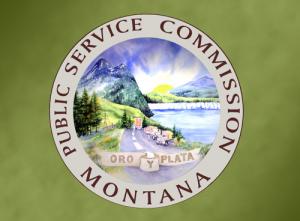Montana Requires Switch to 12-CP Method of Cost Allocation

To facilitate a reduction in rates for retail electric consumers, the Montana Public Service Commission has ordered NorthWestern Energy to change the way it allocates property tax expense among its various customer classes. Historically, NorthWestern has used a tax tracker to adjust rates through which to recognize increases or decreases in its tax liability resulting from annual revaluations of the company’s property by the state’s Department of Revenue. The commission’s concern over the issue had been heightened in recent years by substantial increases in the utility’s claimed tax expenses.
Last year, the commission said, property taxes paid by NorthWestern came to $148 million. The commission reported that between 2012 and 2016, property taxes for the utility increased by nearly 60%. That led the commission in early 2017 to urge the state legislature to amend the current law allowing tax passthrough mechanisms.
In reviewing how the utility apportions its property tax costs, the commission related that in determining the amount of tax expense to be collected from retail ratepayers, the company allocates the tax to particular types of plant, including electric transmission facilities. In the past, the commission noted, NorthWestern allocated responsibility for the property tax expense associated with transmission property using a “revenue credit method.” That method applies a specific percentage value to NorthWestern’s total revenue from the provision of wholesale transmission services under federally approved wholesale tariffs.
The commission explained that the percentage value so assigned is intended to reflect the portion of the total wholesale revenue requirement as set by the Federal Energy Regulatory Commission (FERC) that is associated with Montana property tax expense. NorthWestern applies the percentage value annually to revenues earned from customers taking service under FERC tariffs. That amount is then deducted from the total to derive the retail tracker rate.
The Montana commission, however, found that the utility should move to a 12 coincident peak (12- CP) method of allocation instead. The commission asserted that the 12-CP approach would produce a more equitable measure of costs to be borne by Montana retail customers. Under the 12-CP method, transmission property tax responsibility for wholesale customers is based on the aggregate wholesale customer average demand in each of the 12 system demand hours as a percentage of the average system demand in those hours.
The commission found that the revenue credit method traditionally relied upon by NorthWestern does not directly track expenses. Instead, the commission said, it merely produces a greater or lesser result due to fluctuations in wholesale customer usage of transmission services.
Based on the evidence presented in the case, the commission concluded that there was no support for the proposition that property tax expense and wholesale sales volumes are correlated, much less one the function of the other. To the contrary, the commission held that electric transmission property should be cost-allocated on the basis of demand, something which the 12- CP method does much better. Re NorthWestern Energy, Docket No. D2017.11.86, Order No. 7580a, Jan. 23, 2018 (Mont.P.S.C.).



